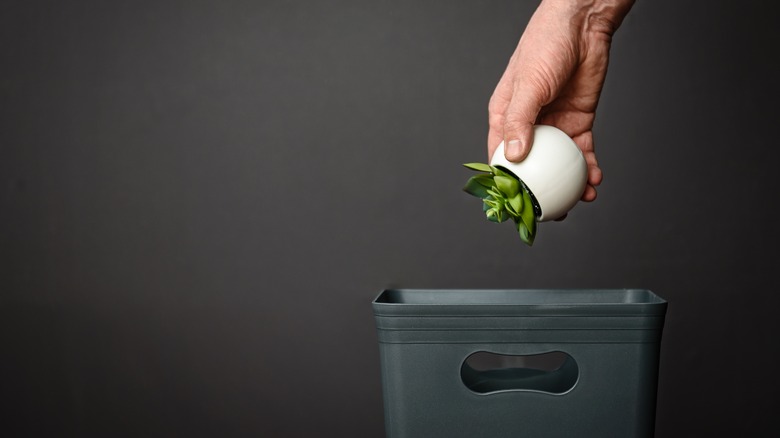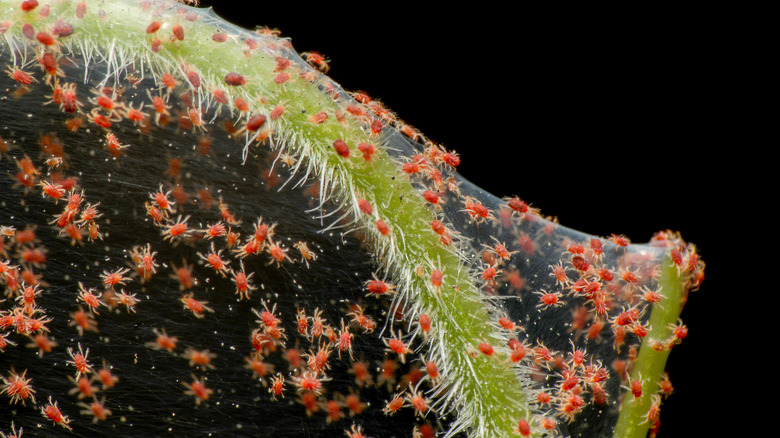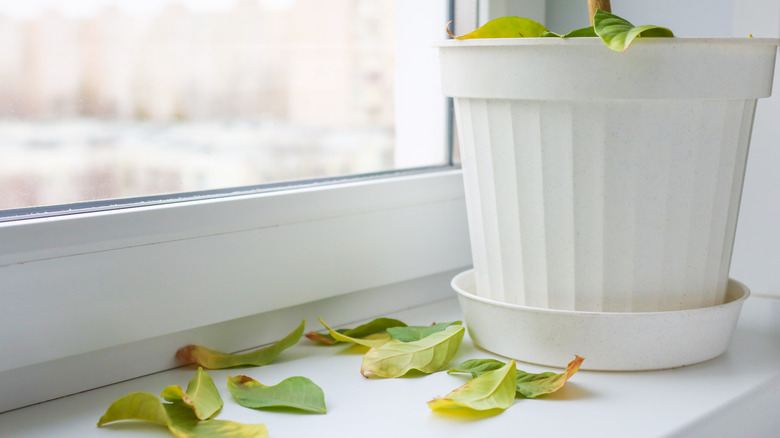Throw Your Plants Away Immediately If You Notice This
Gardening around homes and offices is a cost-effective way to add beauty to your environment. And the benefits don't stop at aesthetics– keeping plants in both living and working spaces can have some health benefits. According to Mobilane, houseplants can help combat smoke and allergies, improve mood, promote better sleep quality, clean the air, and reduce the chances of catching a cold. Space Refinery also notes that office plants can enhance the workplace, increase productivity, spark creativity, and reduce noise.
Because of all the benefits we get from our plants, many of us put in the work to keep them in perfect shape. Unfortunately, some situations are beyond our control, and even with the most meticulous care, things can go wrong. Sometimes, plant owners have no choice but to discard their plants. How do you know when it's time to part ways with your potted friend? We'll cover some instances below.
Pests invading
Of all the reasons to throw a plant away, pest infestation may be the most urgent. Infestation is a common problem that isn't limited to gardens and farms. As long as you keep plants, even if they're indoors, pests such as bagworms or mealybugs can invade. You can try to get rid of the infestation, but it is an uphill battle. Oftentimes, you'll find that the pests have established a home and laid eggs deep in the soil. In this case, it's best to dispose of your plant to prevent the problem from spreading.
Well + Good explains how to spot six different types of pests, including spider mites, scales, and slugs. If you notice any of these symptoms, you should first separate the infested individual from any other surrounding plants. Then, if spot treatments like neem oil and rubbing alcohol don't fix the problem, it is time to get rid of your plant and start new with a fresh one.
Leaves falling aggressively
It's normal for plants to shed their leaves moderately now and then, but when the shedding becomes aggressive, it may be a result of poor weather conditions, disease, or plant shock, according to Gardening Know How.
If you notice increased levels of shedding, there are a couple of steps you can take before disposing of the plant completely. First, try to stabilize the plant's environment. Sudden changes in temperature or humidity can cause leaf loss. Cabin Life says to do this by making environmental transitions gradual. When it's time to bring outdoor plants inside for the winter, they recommend bringing them indoors at night only for a couple of weeks. This will allow your plants to become acclimated to the indoor temperatures before making the full-time transition.
If environmental shock is not the cause of leaf loss, you should check for infestations. Carefully inspect the leaves and try the spot treatments we referred to earlier. If the problem remains, it's time to ditch the plant. Remember, your goal is to improve your livelihood — not create extra chores. You can also try swapping your plant for a non-shedding species.


